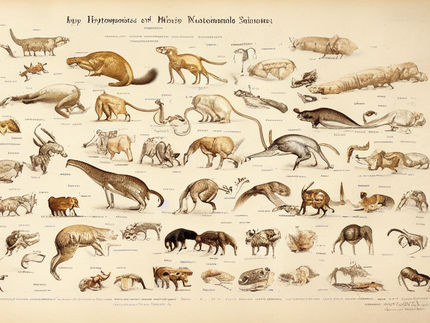Domestic cat genome sequenced
A report that appears in the scientific journal Genome Research details the first assembly, annotation, and comparative analysis of the domestic cat genome (Felis catus). The DNA of a 4-year-old Abyssinian cat named Cinnamon, whose well-documented lineage can be traced back several generations to Sweden, has been sequenced. Cinnamon is one of several mammals that are currently being analyzed using "light" (two-fold) genome sequence coverage. To make sense of Cinnamon's raw sequence data, a multi-center collaboration of scientists leveraged information from previously sequenced mammalian genomes as well as previous gene-mapping studies in the cat. In doing so, they found that Cinnamon's sequences spanned about 65% of the euchromatic (gene-containing) regions of the feline genome.
The similarity between the cat genome and six recently completed mammalian genomes (human, chimpanzee, mouse, rat, dog, and cow) allowed the scientists to identify 20,285 putative genes in the cat genome. The comparison also revealed hundreds of chromosomal rearrangements that have occurred among the different lineages of mammals since they diverged from a diminutive ancestor that roamed the earth among the dinosaurs some 100 million years ago.
The genome sequence analysis is certainly expected to lead to health benefits for domestic cats, 90 million of which are owned by Americans alone, according to The Humane Society. But the domestic cat also serves as an excellent model for human disease, which is one reason why the National Human Genome Research Institute (NHGRI) initially authorized the cat genome sequencing project three years ago.
Domestic cats possess over 250 naturally occurring hereditary disorders, many of which are similar to genetic pathologies in humans. For example, Cinnamon's pedigree carries a genetic mutation that causes retinitis pigmentosa, a degenerative eye disease that can lead to blindness. In humans, retinitis pigmentosa affects 1 in 3,500 Americans. The domestic cat also serves as an excellent model for human infectious diseases, including HIV/AIDS. Feline immunodeficiency virus (FIV) is a genetic relative of human immunodeficiency virus (HIV), which causes AIDS.
Using the cat genome sequence data, the researchers identified several hundred thousand genomic variants (known as SNPs, DIPs, and STRs), which can be used to determine the genetic basis for common hereditary diseases. The scientists have already used these variants to identify the causative gene for Cinnamon's retinitis pigmentosa. These variants will also be useful for parentage testing, forensic analysis, and studies of evolution, including the reconstruction of domestication processes, fancy breed development, and ecological adaptation among the great roaring cats.
The researchers also analyzed the feline genome for interesting features such as microRNAs, Numts (pronounced "new mights"-nuclear genomic fragments that migrated to cat chromosomes from mitochondria), and a vast sea of selfish DNA-like repetitive elements. The repetitive elements included scores of genomic stretches from historic retroviruses, some with known links to cancer.
The Cat Genome Project is based at the National Cancer Institute (Frederick, Md.).
Original publication: Pontius, J.U., Mullikin, J.C., Smith, D., Agencourt Sequencing Team, Lindblad-Toh, K., Gnerre, S., Clamp, M., Chang, J., Stephens, R., Neelam, B., Volfovsky, N., Schäffer, A.A., Agarwala, R., Narfström, K., Murphy, W.J., Giger, U., Roca, A.L., Antunes, A., Menotti-Raymond, M., Yuhki, N., Pecon-Slattery, J., Johnson, W.E., Bourque, G., Tesler, G., "NISC Comparative Sequencing Program, O'Brien, S.J. 2007. Initial sequence and comparative analysis of the cat genome."; Genome Res. 17: 1675-1689.
Most read news
Topics
Organizations

Get the analytics and lab tech industry in your inbox
By submitting this form you agree that LUMITOS AG will send you the newsletter(s) selected above by email. Your data will not be passed on to third parties. Your data will be stored and processed in accordance with our data protection regulations. LUMITOS may contact you by email for the purpose of advertising or market and opinion surveys. You can revoke your consent at any time without giving reasons to LUMITOS AG, Ernst-Augustin-Str. 2, 12489 Berlin, Germany or by e-mail at revoke@lumitos.com with effect for the future. In addition, each email contains a link to unsubscribe from the corresponding newsletter.
























































